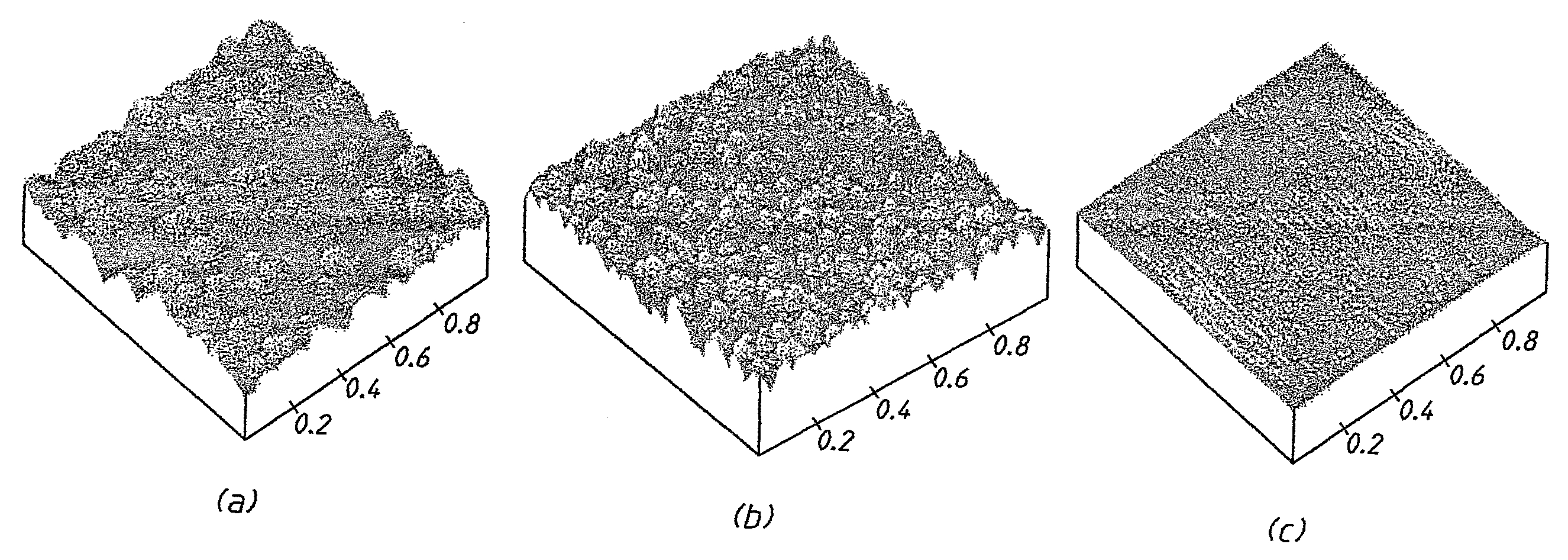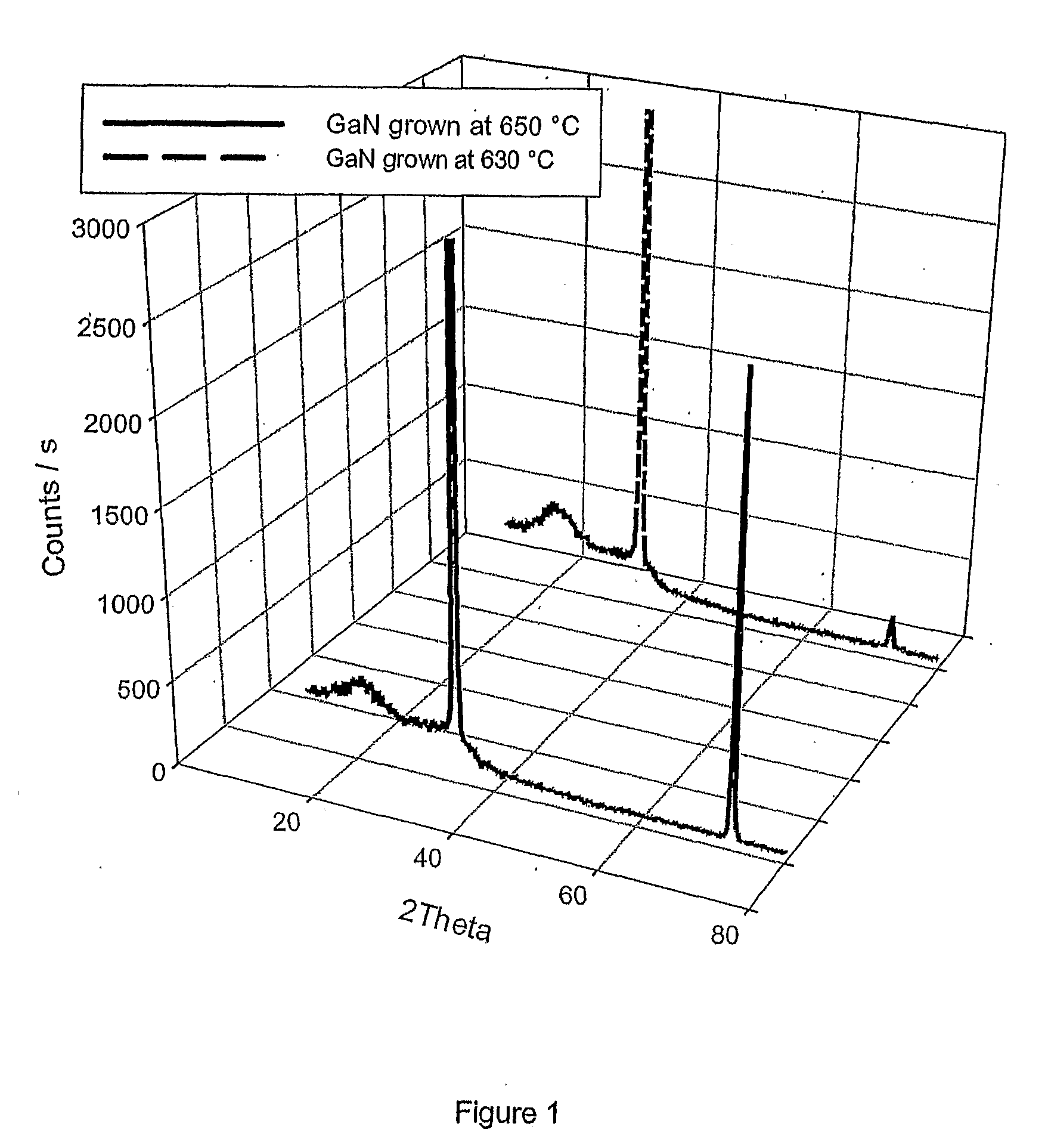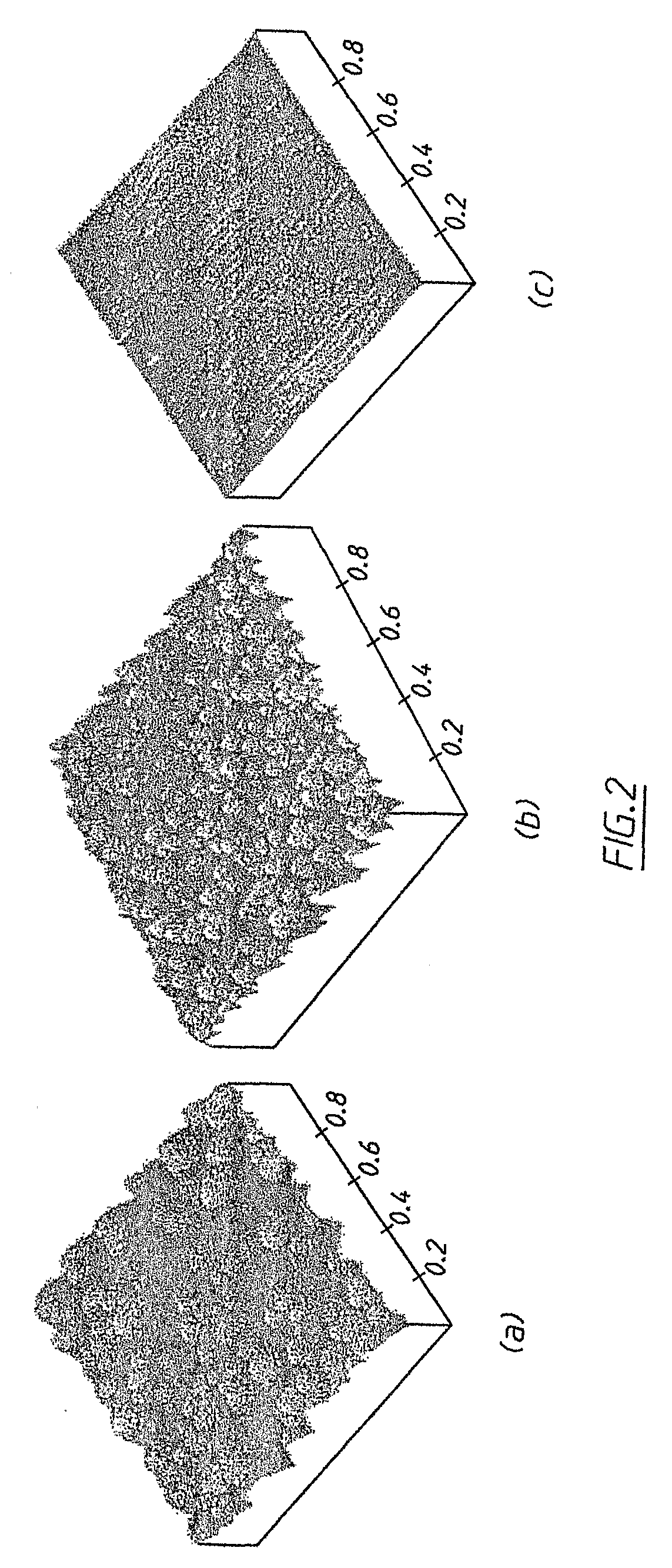Method and Apparatus for Growing a Group (III) Metal Nitride Film and a Group (III) Metal Nitride Film
a metal nitride and film technology, applied in the direction of crystal growth process, chemical vapor deposition coating, coating, etc., can solve the problems of oxygen remaining in the system, the disadvantage of rpecvd process, and the loss of oxygen in the system
- Summary
- Abstract
- Description
- Claims
- Application Information
AI Technical Summary
Benefits of technology
Problems solved by technology
Method used
Image
Examples
example 2
GaN Film Grown at 3 Torr using RPECVD
[0528]Example 1 was repeated to grow a gallium nitride film. A higher growth pressure of about 3 Torr as opposed to 1 Torr as used in Example 1, was used in order to reduce the mean energy of the active neutral nitrogen species reaching the substrate. It was believed that the higher growth pressure resulted in more gas collisions which reduced the mean energy of the active neutral nitrogen species incident on the gallium nitride film.
[0529]This change in growth conditions led to the film immediately appearing clearer in colour than the film grown at a pressure of 1 Torr. The slight yellowishness observed in the film grown in Example 1 was believed to have resulted from the sample being slightly gallium rich, or as the result of some crystal damage. The electrical properties of the film grown in Example 2 were greatly improved compared to Example 1, as were the optical properties.
[0530]The improvement in film quality has allowed the advantages of ...
example 3
A Series of GaN Films Grown at 3 Torr using RPECVD
[0531]Results are presented and discussed below for multiple GaN films grown in an apparatus according to the present invention applying a process in accordance with the present invention. In the process, a lower base pressure of about 10−7 Torr was used and improved control of the gas flow rates by use of a pressure valve controlled by a Baritron feedback from the pressure gauge was maintained during growth of the gallium nitride film. The nitrogen flow rate was about 600 sccm / min. The trimethylgallium was introduced as a mixture with a nitrogen carrier gas at a flow rate of about 5 sccm / min. The amount of trimethylgallium to nitrogen carrier was about 1:2000, and the pressure during film growth was 3 Torr.
[0532]The apparatus differed in its geometry from previous apparatus used for growing gallium nitride films, in particular in relation to the orientation of the incoming gas and the plasma feed. In the apparatus used, the incoming...
experimental details
for Example 3
[0537]A series of GaN samples were grown in a UHV RPECVD system. Prior to commencing film growth, the deposition chamber was pre-evacuated to a base pressure of approximately 2×10−7 Torr at the desired 650° C. substrate temperature.
[0538]The growth pressure was 3 Torr for all the film growths. Trimethylgallium was introduced into the chamber, with nitrogen carrier gas, through a showerhead in the form of a ring above the sample holder with a flow rate of 5 sccm. A nitrogen flow of 150 sccm was introduced through a microwave plasma from the top of the growth system (where an impeller is used the flow rate is 600 sccm). The growth rate was around 0.2 μm / h. The final thickness of all films was between 0.8 to 2 μm. GaN films were grown on a variety of substrates: sapphire, silica, soda lime and borosilicate glass. On all substrates, studies were done either without any buffer layer or with an additional 50 nm thick ZnO RF sputtered buffer layer.
Results
[0539]The growth tempe...
PUM
| Property | Measurement | Unit |
|---|---|---|
| Temperature | aaaaa | aaaaa |
| Temperature | aaaaa | aaaaa |
| Length | aaaaa | aaaaa |
Abstract
Description
Claims
Application Information
 Login to View More
Login to View More - R&D
- Intellectual Property
- Life Sciences
- Materials
- Tech Scout
- Unparalleled Data Quality
- Higher Quality Content
- 60% Fewer Hallucinations
Browse by: Latest US Patents, China's latest patents, Technical Efficacy Thesaurus, Application Domain, Technology Topic, Popular Technical Reports.
© 2025 PatSnap. All rights reserved.Legal|Privacy policy|Modern Slavery Act Transparency Statement|Sitemap|About US| Contact US: help@patsnap.com



